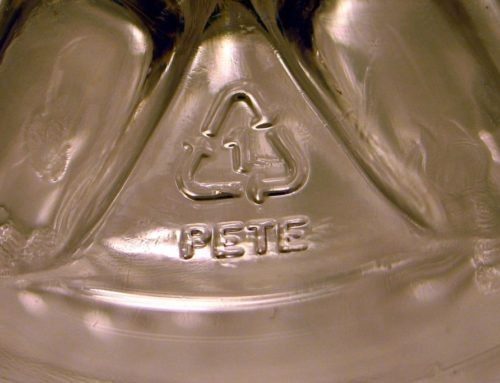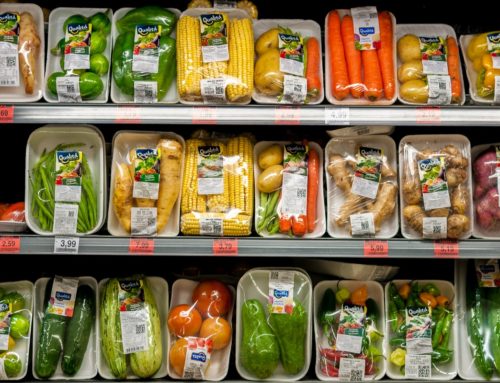by Peter Jones
8 minute read
I’ve just read one of the worst reports I’ve ever seen. I’m writing this article to spare you the trouble of doing the same. It purports to show that much of the problem of marine plastics is attributable to an irrational attachment to the goal of recycling. In fact, it does no such thing.
The report, entitled Save the Oceans, Stop Recycling Plastics, comes from the Global Warming Policy Foundation (GWPF), a think tank founded by noted climate sceptic and Brexiteer Lord Lawson, together with social anthropologist Dr Benny Pieser. Its board is largely British conservatives, although it includes one or two sceptical Labour and cross-bench figures.
Taking the Mikko
It claims to be “open-minded on the contested science of global warming” but “deeply concerned about the costs and other implications of many of the policies currently being advocated.” GWPF does not disclose its funding sources, and has previously been in trouble with the Charity Commission for abusing its charitable status by behaving in ways that blurred fact and comment. Perhaps that is why the views expressed in this rather tendentious GWPF report are attributed to the author, Finnish epidemiologist Mikko Paunio.
In waste management, the GWPF has found a further area in which it thinks that what it calls “green ideologues” are pursuing expensive and environmentally counterproductive policies. The report claims that recycling plastic, far from yielding environmental benefits, is a significant cause of environmental harms – including contributing heavily to the problem of marine plastics. And, happily for Europhobes like Lord Lawson, Paunio says that EU policy bears the blame.
A thorough fisking of the ten bizarre pages of the report would be an excessively lengthy exercise. Some of its odder points, though, are worth reviewing before we get to the heart of the matter.
The wrong sort
On p2, Paunio asserts that separation of post-consumer plastics is “impossible” to do “effectively at source”. If he meant that separating plastics into individual polymer streams at source is impractical, he’d be right. But he continues:
“This means that if recycling is to take place, waste must be sorted after collection. For this purpose, so-called mechanical-biological treatment (MBT) plants are the favoured option in the EU.”
He entirely ignores the fact that a great deal of mixed plastic is collected for recycling, often alongside metals (from which it can easily be separated) or as part of a mixed dry recycling stream. From here, it can be separated with a fair degree of success at a materials recycling facility (MRF). In the UK, MBT’s role in plastics recycling is tiny. To omit any mention of the processes by which a great deal of recyclable plastic is successfully separated for recycling is peculiar, to say the least. Indeed, he goes on to say on p4 that some plastic is separated at source – an impossibility just two pages earlier.
Slow burn
While MBT is ineffective and dangerous, according to Paunio incineration “stands apart as the best way to deal with MSW” – but he laments that controls implemented by the Waste Incineration Directive rendered incineration uneconomic. He sees no conflict between this statement and the “vast networks of incineration plants” he acknowledges have been built in many parts of Northern Europe (and the UK, which he wrongly asserts has very little incineration capacity). Nor does he see a conflict when he applauds the low emissions of toxins from incinerators, despite acknowledging that this is a result of the same EU legislation he castigated.
Paunio’s rationale for favouring incineration is almost laughable.
- He asserts that, because waste does not have to be sorted before it is incinerated, “it does not suffer from the problems of leakage that are found with almost every other approach”. He doesn’t explain how eliminating sorting would get rid of system leakage, but it seems to have something to do with the possibility of collecting all mixed waste in sealed bags (p9).
- He argues that incineration saves on CO2 emissions by avoiding the need to burn coal and gas, quoting a study from 1996 – not mentioning that incineration is generally more CO2 intensive than gas, or that the diminished role of coal and the rise of renewables in the two decades since have rather changed the equation.
- The impression that the report is based on outdated information is reinforced when Paunio excitedly writes that “it is envisaged that we will soon ‘mine’ incinerator ash for valuable metals”. Imagine his thrill when he learns that the extraction of metals from bottom ash is already commonplace, and in the UK now counts towards recycling!

Lost cause? 25% of marine litter in developing countries comes from within the waste management system. Photo: istolethetv (CC BY 2.0), via Flickr.
Spoiling for an argument
Enough fun and games: here’s the core of Paunio’s argument. Recycling plastic in Europe is counterproductive because of a high reliance on exports – historically to China, and now elsewhere. Plastics leave countries where very little material escapes the waste management system, to be treated in countries where standards are lower. Material will then escape into the natural environment when, had it not been sent for recycling, this would not have happened. The EU should therefore abandon plastic recycling and instead incinerate mixed waste.
There’s an element of truth in this argument. The West has been dilatory in establishing its own plastics reprocessing sector, and has been overly reliant on exports to countries with cheap labour and lower environmental standards. But Paunio’s conclusion that plastics should simply be burned instead is supported only by his false or outdated claims about the impossibility of source separating plastics and the desirability of incineration.
Why not take measures to reduce unnecessary plastics, and to stimulate local reprocessing markets by requiring producers to take greater responsibility for making sure the waste from their products goes back into production? (Without explanation, Paunio dismisses the EU’s producer responsibility framework as “notoriously dysfunctional, inefficient and unhygienic”).
Guess pass
Surprisingly, given the title of the report, Paunio doesn’t try to put a figure on how much of the EU’s plastic exports to China escape into the ocean. He says annual exports are 3m tonnes (though the source he quotes says 3.4m). At times he implies it is all “dumped” in China, but elsewhere he says that it is “impossible” to know how much is “leaked to the environment and ultimately to the oceans”.
He quotes an “informed guess” of 20%, which would be a substantial 680,000 tonnes. In fact that guess, made by Keith Freegard of Manchester-based plastics recyclers Axion Polymers, was that 15-20% is not recycled. He then asked, “Is that going straight into the oceans?” rather asserting that this is the case. In fact, a substantial amount of the non-recycled “plastic” is not plastic at all, but paper and other contaminants that haven’t been removed before export. I can’t say for sure what Mr Freegard’s view is on how much plastic recycling in China reaches the ocean, but having his words used to build a case for abandoning plastics recycling altogether may come as something as to a surprise to him.
Some of the non-recycled exported plastics will probably be managed responsibly; even material that is dumped will not all reach the ocean. In truth, we know little about what happens to plastics in China, but there is no clear evidence to support the idea that significant amounts end up in the ocean.
Paunio actually seems to waver on whether marine plastics are a problem. Sometimes he says the impact of marine plastics is “horrific”; but he also downplays the scale of the problem, by way of an odd comparison. He says that the global annual tonnage – he variously quotes 8m tonnes and 10m tonnes, while Eunomia’s estimate is over 12m tonnes – is a “big” but not “overwhelming” number, similar to “the quantity of crude oil Finland… imports for its own consumption annually.” And, “horrific” or not, the amount of marine plastic plausibly attributable to European plastics exports cannot be more than a small fraction.
Bearing the Brundtland
Despite his EU-bashing, Paunio accepts that “The vast majority of the marine litter problem is attributable to poor waste collection and other sanitary practices in Asian, and to a lesser extent African, towns and cities in coastal areas and along rivers.” However, he lays the blame for this, too, on Europe’s “green ideologues”, for reasons that are hard to explain. He quotes ISWA as estimating that “75% of land based marine litter in low to upper-middle income economies comes from litter and uncollected waste”.
The blame for waste management in these countries being so bad, he says, can also be laid at the door of Europe’s “green ideologues”, in the specific form of Gro Harlem Brundtland, former Prime Minister of Norway. Her enthusiasm for “new and exciting environmental issues such as climate change and water and energy conservation”, he claims, led to an influential commission she ran in the 1980s failing to recommend support for basic urban sanitation measures. In turn, sanitation was neglected in the UN Sustainable Development Goals, leading to a lack of investment that has never been rectified. I will leave it to the reader to reach a view on the plausibility of this narrative, which isn’t clearly evidenced in the report.
But regardless, Paunio advances no argument that plastic recycling is to blame for the inadequacies of waste collection systems, which he acknowledges is where the majority of the problem lies. Collection systems and facilities need to be improved, but at present it’s often informal recycling, driven by material values, which ensures that at least some waste is collected. The GWPF report singularly fails to make its case, and doesn’t bear serious consideration.






Dr Paunio has responded to this article in a blog of his own here: https://www.thegwpf.com/mikko-paunio-this-philosopher-of-waste-has-not-done-his-homework/
If you like your analysis in Twitter thread form, here’s a big ol’ thread I wrote covering the GWPF report in a somewhat different way: https://threadreaderapp.com/thread/1013969606287949825.html
Mail to Mikko and others (excerpt)
Mikko, gents,
Methinks the lady doth protest too much. He spent a huge amount of time studying the trees and not the forest. The NIMBY Syndrome (not in my back yard) exists. I’ve picked up examples within our province alone and it is simple; the recycling facilities are inadequate for the demand. Again; MORE MONEY.
But, what Jones totally AVOIDS is that there is a substantial problem and the EU is not addressing it. Out of sight, out of mind. The usual from the Left, vitriolic attacks on an OPINION but no SOLUTIONS. Incineration may not be an ideal solution but it is, in this scenario, the lesser of two evils.
In reality if you scratch a Tree Hugger you will find a money grubbing Capitalist underneath including Jones.
A thought: AGW is NOT a Hoax. It is a genuine CONSPIRACY (led by the criminal Maurice Strong originally). The hoax is the vehicle of twisted science used to propogate the aims of the conspiracy.
Thanks for your lively comment, though I’m afraid I’m struggling to apply it to the article.
Perhaps you could explain what the “substantial problem” to which you refer is? The analysis given above shows that, while marine litter is a problem, Dr Paunio has not made the case that ending plastic recycling would affect it to any meaningful degree.